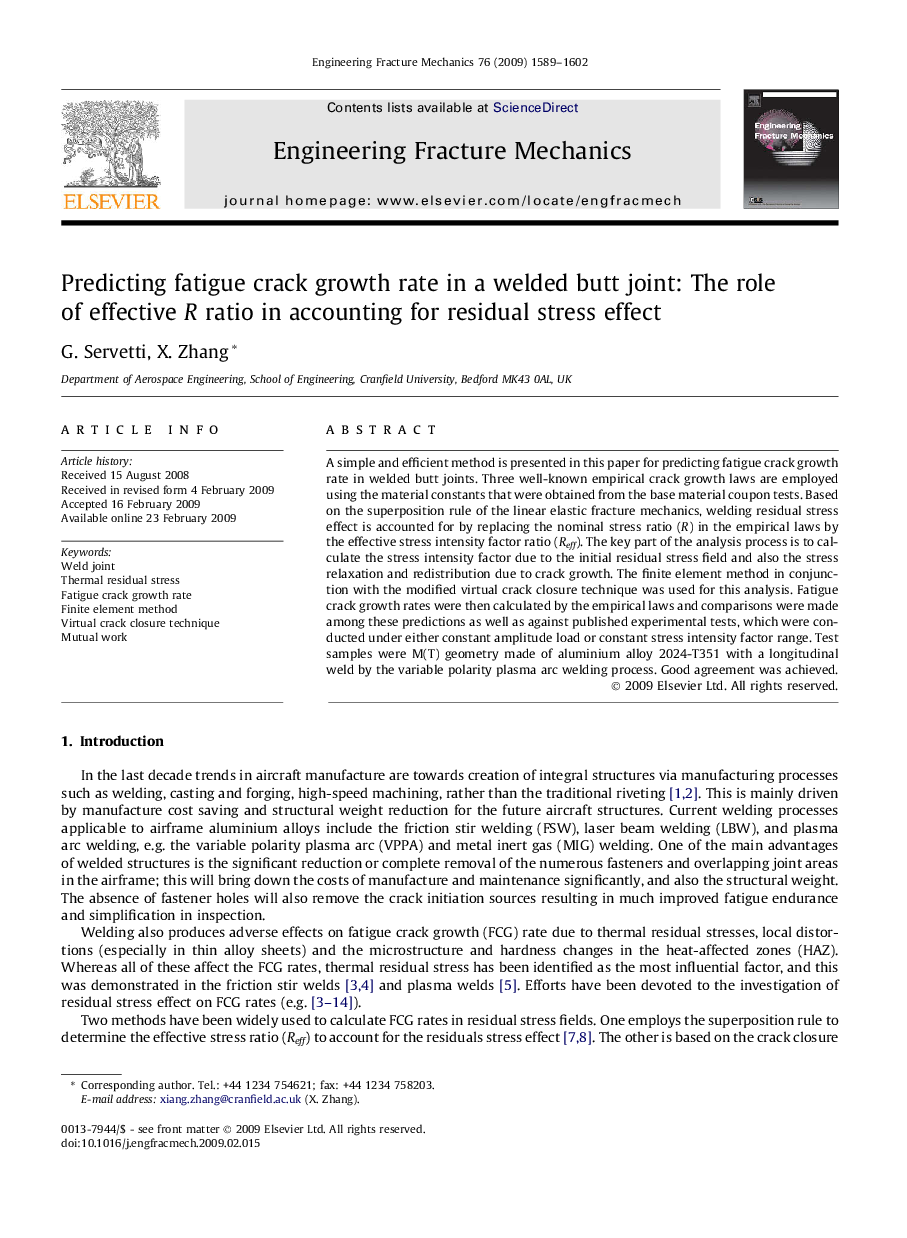| Article ID | Journal | Published Year | Pages | File Type |
|---|---|---|---|---|
| 775703 | Engineering Fracture Mechanics | 2009 | 14 Pages |
A simple and efficient method is presented in this paper for predicting fatigue crack growth rate in welded butt joints. Three well-known empirical crack growth laws are employed using the material constants that were obtained from the base material coupon tests. Based on the superposition rule of the linear elastic fracture mechanics, welding residual stress effect is accounted for by replacing the nominal stress ratio (R) in the empirical laws by the effective stress intensity factor ratio (Reff). The key part of the analysis process is to calculate the stress intensity factor due to the initial residual stress field and also the stress relaxation and redistribution due to crack growth. The finite element method in conjunction with the modified virtual crack closure technique was used for this analysis. Fatigue crack growth rates were then calculated by the empirical laws and comparisons were made among these predictions as well as against published experimental tests, which were conducted under either constant amplitude load or constant stress intensity factor range. Test samples were M(T) geometry made of aluminium alloy 2024-T351 with a longitudinal weld by the variable polarity plasma arc welding process. Good agreement was achieved.
